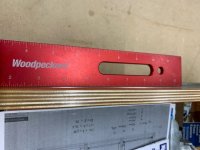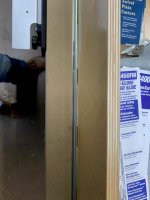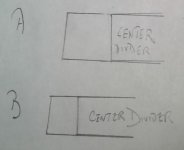Hi all,
I just glued up a cabinet with a middle divider. I’ll eventually have 4 drawers on each side.
I noticed after the glue up that the middle divider is a little over 1mm out of square. I believe this is due to a loose fitting domino.
My concern is when I start installing the drawers it’ll start binding at the rear (left side) and the other way around for the other side.
My solution is to simply shim the drawer slides by 1mm in the offending area which in my own mind will bring it back to square. Will this work or has anyone else got any solutions? I know drawer slides have a bit of play but don’t want to take the risk.
Below is a pic of the right side which shows it out of square towards the rear.
Many thanks in advance.

Andy

I just glued up a cabinet with a middle divider. I’ll eventually have 4 drawers on each side.
I noticed after the glue up that the middle divider is a little over 1mm out of square. I believe this is due to a loose fitting domino.
My concern is when I start installing the drawers it’ll start binding at the rear (left side) and the other way around for the other side.
My solution is to simply shim the drawer slides by 1mm in the offending area which in my own mind will bring it back to square. Will this work or has anyone else got any solutions? I know drawer slides have a bit of play but don’t want to take the risk.
Below is a pic of the right side which shows it out of square towards the rear.
Many thanks in advance.

Andy





